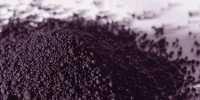Poisoned library books may sound like part of a murder mystery plot or perhaps an elaborate plan to get out of college work, but for some Danish scientists, these are just a day’s work. Researchers at the University of Southern Denmark have recently discovered that some of the books in their library collections of the 16th- and 17th-century period have serious confidentiality.
Using a high-energy X-ray imaging technique, they discovered that some of the pieces’ covers were made using arsenic-containing blue-green pigments. An analysis of three 16th and 17th-century books shows that the covers were made of reusable medieval manuscript fragments, as is the case with some of the books of the period.
The researchers wanted to see if it was possible to read and identify key texts in Latin. However, the text was obscured by a thick layer of green, so they headed to the lab and used a technology called X-ray fluorescence analysis (micro-XRF) which is below. To their surprise, analyzes consistently revealed that the green color was in fact arsenic. More explicitly, they believe that the arsenic-containing pigment may be “Paris green”, also known as copper (second) acetate triarsenite, or “emerald green”, also known as copper (second) acetoarsenite.
Arsenic is particularly dangerous because its toxicity does not diminish over time – even after centuries have passed. If the increased concentration of these things end up in your body, it can lead to diarrhea, nausea, blood in the urine, muscle spasms, hair loss, abdominal pain, and more convulsions. Writing for Conversation, the researchers explained: “This chemical is one of the most toxic substances in the world and exposure can lead to various symptoms of poisoning, cancer development, and even death.”
Despite its toxic properties, arsenic was widely used in paints and dyes throughout the 19th century. As such, it is common to find lots of old paintings, decorations, wallpapers, and textiles. However, researchers actually believe that arsenic was not chosen for aesthetic quality in this case.
The researchers said, “In the case of our book, the pigment was not used for aesthetic purposes, creating the bottom layer of the cover. Perhaps in the nineteenth century – an old book in Paris could be an admirable explanation for the application of insects and insect repellent. “Roughly understandably, librarians have since moved poison books to a special ventilated cabinet and hope to digitize the entire volume to reduce physical contact in the future.














